my experience with sibo, gut inflammation, gerd, and stress
A few years ago, I went on a gut health journey. In this post, I’m going to share how I healed from small intestinal bacterial overgrowth (SIBO), gut inflammation, and gastroesophageal reflux disease (GERD). By sharing my journey, I hope I can help you take charge of your own gut health as well.
Maybe you suffer from heartburn, indigestion or acid reflux. Maybe you have a lot of uncomfortable symptoms that your doctor has chalked up to IBS. Maybe you don’t know what the hell is wrong, but you just feel awful.
You might recognize my symptoms as your own, or feel empowered to advocate for your own treatment. I want to emphasize that it’s really important to speak with your doctor and not self-diagnose on Google (more on that later).
That being said, I know how lonely and frustrating it can be when you’re trying to figure out what’s up with your gut. So it’s my hope that I can offer you clarity and support on your healing journey! I’ll break down what I’ve learned about SIBO, GERD and more, share how I healed, offer up some awesome recipes and more.
But first, I want to begin with a personal story…
trauma, stress, and gut health
In 2016 I hit a major bottom.
In a therapy session, I was struck with a memory that I’d dissociated from for decades. I remembered a trauma from my childhood.
This moment was a major turning point in my life. It explained my drug addiction, my food addiction, my stress, my anxiety, and why I so desperately needed to control every corner of my life.
I don’t like to sit in my suffering, so I dove right into recovery.
I began doing Eye Movement Desensitization and Reprocessing therapy (EMDR), Emotional Freedom Technique (EFT, also known as tapping), and three therapy sessions a week.
I was terrified by what I’d discovered and I wanted relief.
gabby
As I started to heal and slow down, I became aware of how my unhealed trauma had been the root cause of some serious physical conditions, such as chronic stress, severe TMJ, adrenal fatigue and, worst of all, gut inflammation. I finally began to pay attention to digestive issues that had plagued me for more than 10 years. Physical symptoms that I had ignored for so long.
the gut-brain connection
The more trauma I unveiled, the greater the symptoms became. Quickly I learned about the gut-brain connection. The enteric nervous system in our guts is often called our “second brain,” and it communicates all the time with the actual brain. There’s still a lot of research to be done in this area, but it’s really fascinating. You can check out more on the gut-brain connection here. There are several books on the subject, including The Second Brain by Michael Gershon, MD, and The Mind-Gut Connection, by Emeran Mayer, MD.
As I researched this connection, it became crystal clear that my unhealed trauma was the root cause of my gut inflammation.
It took me seven months to write this article because I wanted to make sure I was spiritually healed from the trauma that my gut inflammation caused. Gut health is a major issue — 60 to 70 million Americans have digestive diseases. I’m super passionate about this topic and it’s finally time for me to share my healing methods with you. Some of these methods will be holistic and some will be based on Western medicine. But the most important method of all is spiritual healing. Without spiritual healing, you cannot truly be free from gut inflammation.
Let me preface that I am not a medical doctor or a registered dietitian, so please consult with your physician before taking any of my advice. I have had this article reviewed by several MD’s and gut experts, but I strongly recommend you seek professional medical guidance before you begin your own protocol.
Later in this post I’ll share my favorite spiritual methods for managing stress and maintaining gut health! But let’s start by talking about GERD.
my experience with GERD
For a while my gut inflammation manifested as severe acid reflux, which is a symptom of gastroesophageal reflux disease (GERD). The heartburn, reflux and gastritis flared up when I was processing my deep-rooted anger and rage.
Acid reflux can be caused by a weak esophageal sphincter. At this point you might be thinking, “Hold on. What is an esophageal sphincter?” It’s a muscle that separates the esophagus from the stomach, and it can lose elasticity as you age. But when you’re under 50 and experience reflux, it’s typically a sign of gut inflammation. (More on heartburn and reflux below.)
My reflux was so bad that it created serious inflammation in my gut. It manifested as gastritis, which means your stomach lining is inflamed. I devoted a year of my life to healing the physical symptoms of the reflux and heartburn. Then, when I thought I was in the clear, I hit another turning point in my emotional trauma recovery. More on that below. First, let’s talk about GERD and its common symptoms.
what is GERD?
GERD stands for gastroesophageal reflux disease. About 20% of Americans have GERD.
GERD is what happens when your stomach acid frequently flows back into the esophagus, which is the tube connecting your mouth and stomach. This is also known as acid reflux, and it can irritate the lining of your esophagus.
what are the symptoms of GERD?
- Heartburn, which is a burning sensation in your chest that often occurs after eating or at night
- Chest pain
- Difficulty swallowing
- Regurgitating a sour-tasting liquid or food
- The feeling of a lump in your throat
GERD treatment
You can treat GERD with over-the-counter medications like antacids (Tums, Rolaids, Mylanta) as well as lifestyle changes such as eating slowly and not lying down after eating (I talk more about this later). You can find more information here.
When GERD is really bad, you may need to take prescription medications such as acid blockers and proton pump inhibitors (PPI’s). While I believe these products are overly prescribed, they do have massive value when you really need to put the fire out.
That was the case for me. Six months into my trauma recovery I started to get acid reflux and heartburn symptoms. I was so unfamiliar with these symptoms that I called my father-in-law, who’s a cardiologist, terrified that I was having a heart issue. He immediately assured me that I was having acid reflux and recommended that I get an over-the-counter acid blocker. Since I was brought up using homeopathy, I was not accustomed to taking over-the-counter drugs and I resisted his advice. This was a terrible idea!
I spent two months trying to heal my reflux and heartburn with strictly holistic methods (seen below). These methods can be great, but if you’re seriously inflamed they won’t be enough. My gut was so inflamed that changing my diet and using holistic methods were not helping. I continued to read holistic blogs that said how bad acid blockers and PPI’s were because they lower the acid in your digestive system, and we need acid to digest our food so that we don’t get reflux in the first place. And while today I agree with this theory, I learned the hard way that there is a VERY important place for modern medicine.
treating GERD with western medicine and holistic methods
I spent two months self-diagnosing on Google and again, I DO NOT RECOMMEND THIS. Please do not diagnose yourself based on this article. I’m sharing my own experience so you can see what my own healing journey looked like, but yours might look different. So it’s really important to find a doctor or a team of doctors and work with them!
I learned this lesson the hard way. I found myself sicker than ever after my rogue Googling. My reflux was so bad that I couldn’t sleep through the night. I was losing my voice because my esophagus was so inflamed, and at times I struggled to breathe.
Finally I got the right medical attention and saw a gastrointestinal doctor. He scheduled an emergency endoscopy (upper GI exam) and diagnosed me with gastritis. He explained to me that the only way to heal the inflammation was to put me on three months of PPIs, or 40 mg of Nexium per day.
While this went against my holistic views, I had to surrender to a plan beyond my own. I trusted my doctor and followed his suggestion. His goal was to help me get off the PPI’s within three months so that I wouldn’t be dependent on them. He felt great about me combining my holistic/diet methods with the PPI protocol. And while he’s a traditional MD, he agreed that a lifelong PPI protocol (unless it’s absolutely necessary) wasn’t the solution due to the risks associated with them.
So I followed a nontraditional plan of Western medicine protocol and supercharged holistic methods!
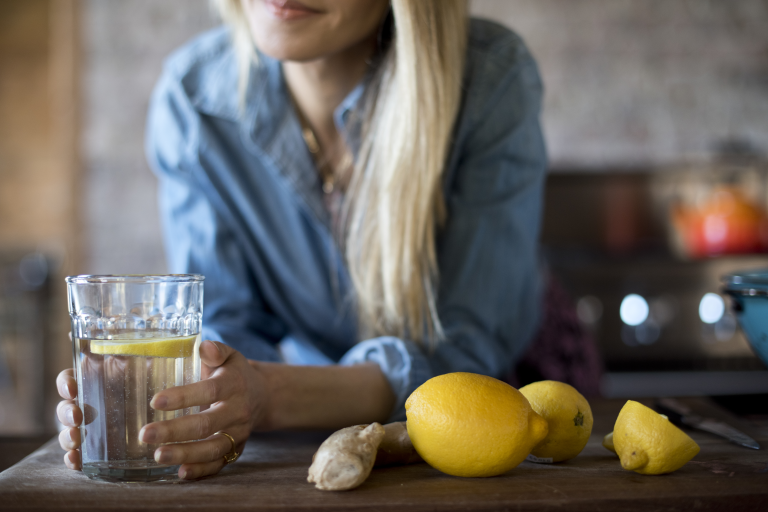
Outlined below is the process I took to heal my gastritis and thereby heal GERD (acid reflux and heartburn). If you have low-level heartburn or reflux, the holistic methods outlined may be enough. If you have severe issues, I recommend getting a stool test and seeing a GI doctor to look more closely at your gut lining. You may need a PPI protocol for a period of time.
the diet I followed to heal GERD, acid reflux, and heartburn
Note that this is the diet I followed when healing my acid reflux and heartburn. This is not a SIBO diet. No matter which one you’re healing, be sure to talk to your doctor about your own diet, since we are all different.
stop eating these foods when you’re healing GERD
- Caffeine (coffee, tea, soda, chocolate, etc.)
- Gluten, dairy and sugar (because they are super inflammatory)
- Raw vegetables (they are harder to digest and can irritate the gut lining)
- Citrus, though lemon in hot water is fine
- Sparkling water (creates gas)
- Onions
- Garlic
- Tomatoes, eggplants and other nightshades
- All fried food
- You may even want to remove grains. I found that taking grains out altogether really helped me heal my gut faster.
foods and supplements I used to heal GERD
- L-Glutamine powder (consult with your doctor before trying this)
- Digestive enzymes 30 minutes before meals
- Bitters in your water before a meal
- Collagen powder if you’re not vegetarian/vegan (add to your herbal tea)
- Gelatin if you’re not vegetarian/vegan (healthy jelly recipe below)
- DGL (licorice capsules) are great before a meal. They help you with digestion.
- Herbal teas are great for digestion: licorice, camomile, slippery elm root, marshmallow root.
- Slippery elm root lozenges are great for coating the gut lining.
- Coconut oil is a great addition to a smoothie daily. The coconut oil coats your gut lining and is a fantastic antibacterial.
- Probiotics (as long as you don’t have SIBO — I’ll explain more later)
- Cooked leafy greens
- Organic/grass-fed meat is great if you eat meat
- Wild salmon
- Ginger tea
- Go easy on the cruciferous vegetables such as broccoli and cauliflower. You can have them sparingly if they’re really cooked down. This is the one time when your goal is to boil your veggies to death!
apple cider vinegar, kefir, and bone broth for healing GERD
Start your day with a tablespoon of apple cider vinegar in hot water. Vinegar may sound like a strange thing to drink, but ACV is great for getting your stomach acid working in the morning to help you digest for the day.
For breakfast you can have a glass of kefir or have it in a bowl with blueberries. Kefir is a cultured food that has great anti-inflammatory properties and can ease symptoms of acid reflux. Kefir is filled with Lactobacillus bacterium plus many other probiotics. These probiotics balance your gut flora, benefit your digestion and therefore support you in healing reflux.
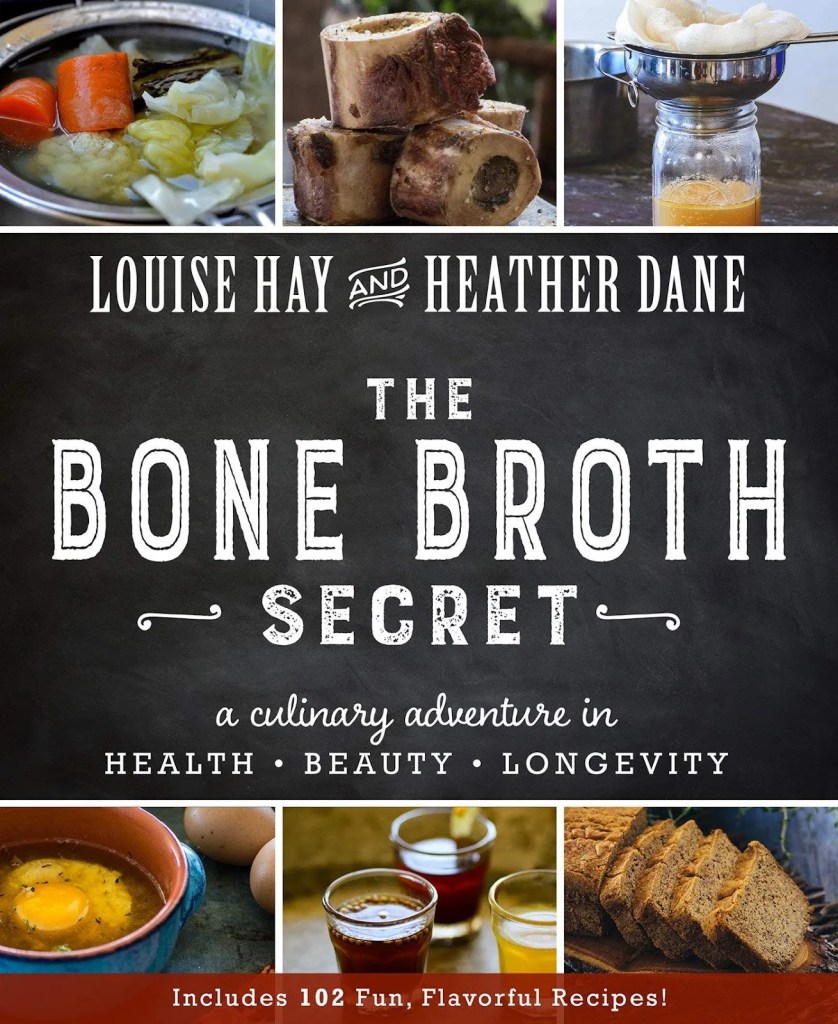
Bone broth is another medicinal food that greatly helps heal inflammation in the gut. When collagen is cooked it becomes gelatin, which is filled with amino acids that greatly support your gut health. Some of the many gut benefits of bone broth are that it stimulates acid production that helps with digestion, aids in liver detoxification, restores the intestinal wall, enhances your immune system and much more. If you’re a vegan or vegetarian and don’t want to include bone broth in your diet, you can get good benefits from adding L-Glutamine powder to your morning shake. For more on bone broth, check out Louise Hay’s book The Bone Broth Secret.
watch your portions when healing GERD
What’s most important is that you pay attention to the foods that aggravate you. Everyone is different. Become conscious and aware of the foods that activate your reflux or heartburn. For some people raw food is great, whereas for me it was a major no no! The more you pay attention to how food makes you feel the sooner you can begin to heal.
Finally, a big part of healing GERD/acid reflux is to watch your portions. I’m not suggesting that you deprive yourself, but I am recommending you eat less in one sitting. When you overeat you tax your digestive tract, which can make it harder for the acid in your stomach to breakdown the food. If you chew well and eat less, you assist your digestive juices in digesting your food. Help your gut do its hard work.
Make sure to be relaxed when you eat, chew each bite and enjoy your meal.
the more you enjoy your food, the easier it will be to digest
how PPIs and acid blockers can help GERD
I don’t recommend making acid blockers and PPI’s a habit because they mask the actual issue, which is gut inflammation. But if you’re really suffering you must talk to your doctor about a PPI or acid blocker protocol to put out the fire and give your gut some relief. These pills have a valuable place in your healing plan, but they shouldn’t be something you have to rely on for a lifetime, unless you have a critical condition.
To learn more about acid blockers and PPI’s, consult with your GI medical professional and let them know that you don’t want to become reliant on them. Ask your doctor to create a plan that will help you wean off slowly within three to four months or less.
IMPORTANT NOTE: If you choose a PPI protocol it’s very important to know that you have to wean off of these medications. When you take a PPI you’re blocking your stomach acid by reducing it. When you reduce your stomach acid you give your gut a break from the inflammation. Throughout your PPI protocol, follow my diet/holistic plan so that you can heal your gut simultaneously. Then, when you’re ready to get off the PPI’s (once you’ve had at least three weeks of no symptoms), you must slowly wean off.
Here’s what I did: I took 40 mg of Nexium each day. When I was ready to wean off I started taking 40 every other day. Then 40 every three days. Then I went down to 20 every three days. And by week three I was down to 20 once a week. Eventually I no longer needed them. You must wean! If you get off the meds too fast the acid will flare up and your symptoms will come back stronger than before. Work with your GI doctor to create a plan for getting off your medications.
my experience with SIBO
Here’s the situation. I had healed my reflux after a year of concentrated effort. It was three months before my book Judgment Detox was released. My project manager was on maternity leave, which meant that I was launching a book without the support I’d grown to rely on.
This experience of feeling out of control triggered my trauma and sent me into a fight-or-flight response. In that state I experienced tremendous fear, the overwhelming need to control and chronic stress. Stress is the #1 cause of gut inflammation. And man was I inflamed!

In November, two months before the book launch, I started to notice a strange pain in my upper gut. I had suffered from ulcers in the past so I thought that was what it was. I spent two months trying to heal my gut with my typical methods, but nothing seemed to work. The pain got worse and every time I ate my stomach would blow up like a balloon.
I started to share my symptoms with the doctors I know and they all weighed in with the same response: “It sounds like you have SIBO.”
what is SIBO?
Small intestinal bacterial overgrowth (SIBO) is a gut condition that occurs when bacteria that usually grow in other parts of the gut start growing in the small intestine. SIBO has different causes, but one thing is clear: Stress makes it worse.
When you’re stressed, your gut motility (aka the stretching and contractions of the muscles in your gastrointestinal tract) slows down. As a result, food gets caught in your small intestine. When the food is stagnant, it creates bacteria that grows like a weed. The bacteria causes gas and inflammation, which in turn leads to massive pain in your upper gut, along with chronic bloating, diarrhea or constipation. To put it bluntly, SIBO sucks.
finding a great SIBO doctor is key
I started to self-diagnose with the information from my doctor friends and hours of Google searches. Let me be clear: I DO NOT RECOMMEND YOU DO THIS. My doctor friends didn’t diagnose me; they were just giving me some direction. Instead of making a doctor’s appointment, I got obsessive on the internet.
Thankfully, the Universe saved me from myself by giving me a sign. One afternoon in the midst of my gut struggles, I received a random text from my friend Christine. We hadn’t spoken in months and for some strange reason she felt compelled to text me, “How are you? I’ve been struggling. I have SIBO!” I instantly responded, “Omg I think I have it too!” We got on a call and she put me in touch with her SIBO specialist, a naturopath in California named Dr. Aliza Cicerone. This was a miracle moment.
I immediately set up an appointment with Dr. C! She knew everything about SIBO, a condition that hasn’t gotten nearly enough research or love. I had spent months researching SIBO on my own, and it was clear to me that Dr. C had the best protocol by far.
Dr. Cicerone was integral to my SIBO healing. But she was not my only doctor. Dr. Elena Ferran at NYU-Langone and Dr. Jeffrey Morrison were also part of my amazing team.
Other doctors I recommend are Dr. Aviva Romm, Dr. Mark Hyman, Dr. Frank Lipman and Dr. Robin Berzin.
diagnosing and treating SIBO
SIBO is kind of the new kid on the block in the GI world. I tried really hard to find reliable information on SIBO before Christine put me in touch with Dr. C. But there just wasn’t much out there. So I interviewed Dr. Cicerone about SIBO: What it is, classic symptoms, how it’s diagnosed, and how to treat it. Below is my interview with Dr. C!
what is SIBO and how do we get it?
Dr. Cicerone: SIBO is small intestinal bacterial overgrowth. I try not to be too generic with my answers because the protocol is personalized. How we get it is a tricky thing. But some common things I see are:
- A history of high antibiotic use: people who were sick a lot as kids, people who travel internationally, people who have a history of UTI’s.
- People who have had digestive issues long-term, struggled with constipation their whole life.
- There is a strong link between IBS/Crohn’s and SIBO.
how are stress and SIBO related?
Dr. C: Stress doesn’t cause SIBO, but looking at stress is a huge component of treating SIBO. Your nervous system has two components to it, opposing yet synergistic sides. The sympathetic nervous system is fight-or-flight response, the alarm state. The parasympathetic nervous system is the opposite. It’s “rest and digest,” meditation, deep breathing, mindfulness.
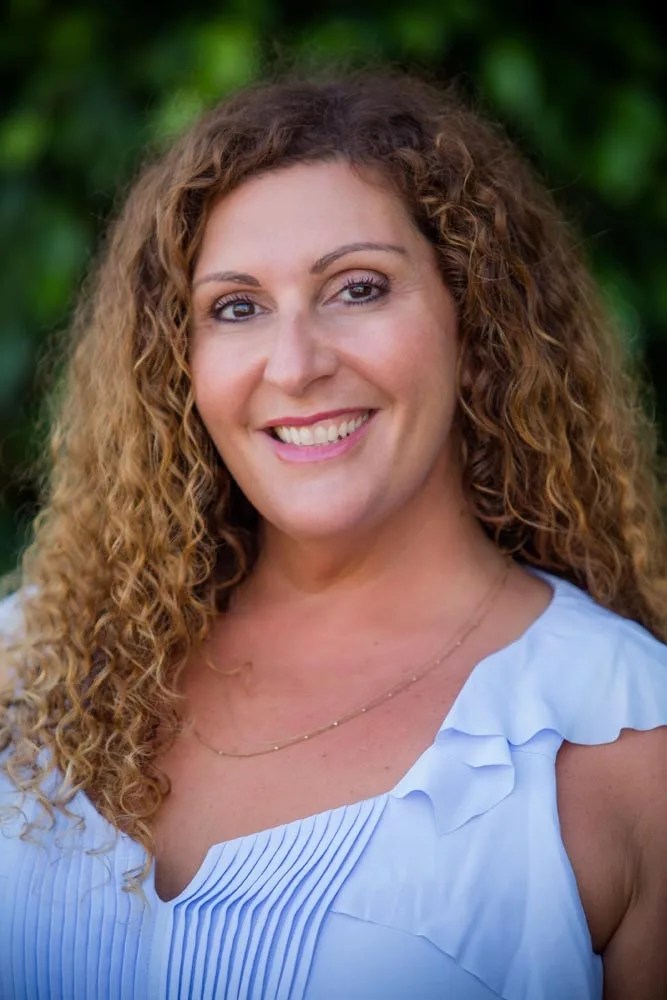
In order to have proper digestion and normal, smooth muscle contractions that propel our food and fecal matter all through our digestive tract, we have to be able to go into the parasympathetic state. Our body should be able to toggle back and forth.
In a state of stress, we become sympathetically dominant. Think about if you’ve been through a difficult time in your life: You’re on high alert. You’re jumpy. Our body doesn’t digest well in this state. Our GI system’s functioning is really diminished. Your body is all revved up, and all its energy is going to your muscles and your brain: How do I get out of this situation? How do I run away? Of my five pillars for healing SIBO, one is stress reduction. You can do everything else, but if you’re still in that alarm state all the time, it will go right back to how it is.
What percentage of people you know can say, “I live a pretty stress-free life”? This is why we see SIBO so much in our society. It’s really widespread and almost an epidemic. But there’s still not a lot of research out there. SIBO is in the small intestine. Diagnosing it requires a breath test. You’re testing levels of hydrogen and methane gas. The gas in your body can be manipulated easily. Normal bacteria in your large intestine can fuel those gases. It’s easy to get a false negative. So in order to diagnose SIBO, you need to know what a true negative looks like.
what are classic SIBO symptoms?
Dr. C: GI symptoms can vary. One that I see most often: You’re bloated all the time, every time you eat. People say, “I’m not bloated when I wake up and by the end of the day I look like I’m pregnant.” That’s a hallmark SIBO symptom. Even if you’re eating a diet full of healthy fiber, that fiber actually feeds it!
Other symptoms include bowel changes for sure. Frequent diarrhea, but also chronic constipation.
One side of SIBO that doesn’t get talked about enough — the neurological manifestations. There’s a strong link between restless leg syndrome and SIBO. I had a patient who had a lot of issues with balance or walking in the last five years, but no digestive issues. Everybody noticed that she was walking better once we treated SIBO.
These symptoms are less frequent, but when people have seen rheumatology, neurology, etc., and they have no answers, I know we need to check it.
how do you treat SIBO?
Dr. C: You’ve got to hit it hard. People have different ways in which they treat it. For example, there are botanicals you can use. I do a double antibiotic treatment. I’ve had better results this way. This can be a little controversial, but my feeling is, if you have SIBO there is no “good” bacteria. When I do a SIBO breath test, I also do a stool test of the large intestine. So I look at the whole picture of the whole GI tract. In 99.9% of my SIBO patients, there is nothing good growing.
How I describe it is: Think of a yard. It’s overgrown with weeds, piles of dog poop, a total mess. You can’t just say, “I’m going to plant this orange tree and throw down some grass seed and expect to have a flourishing yard.” You have to throw down that weed killer. You have to pick up the trash. You have to till and fertilize the soil. You need a good environment where things can grow.
For SIBO, you need antibiotics or even really strong antibacterial herbs. We use antibiotics to get rid of that bad bacteria. The main one I use is very locally active in the GI tract to kill the bugs. There are no dietary restrictions during this time.
After the antibiotics phase, we starve the bugs for 40 days. You remove their dietary fuel source. Our nutritionist individualizes a diet for each person. During this time you’re really shifting the environment. We have to make our GI tract a hospitable place for good digestive bacteria to grow and inhospitable for bad bacteria.
I don’t recommend one diet for everyone because people’s microbiomes are so different. The general rules are very low fiber, low fermentable foods, nothing raw, no grains, no dairy, no nuts, no legumes, no packaged or prepared food, no sugar except for what’s in the allowed cooked fruits and vegetables. You are committed to cooking everything that goes into your mouth for 40 days. It’s absolutely possible to heal SIBO on a vegan diet, but your protein is very limited if not nonexistent. You have to be very conscious of protein. You can have chestnuts and sesame seeds (think tahini).
We also have to reconnect our nervous system and digestive system.
Your digestive system is smooth muscle, involuntary muscle. (The uterus is another example.) We don’t consciously say, “I want my stomach to start churning around.” With SIBO, the gut-brain connection is really diminished.
Preventing SIBO recurrence is about establishing the gut-brain connection. I use a compounded medication for it. Some people opt for herbal support. I like the compounded meds because they work on gut-brain connectivity.
The last component is stress management. People need to get into a state mentally, physically and emotionally, where it’s not an alarm state. It’s different for different people: meditations, journaling, a parasympathetic essential oil blend that you rub on the upper neck behind the ear before you eat, gentle exercise, yoga, eating more slowly.
once SIBO has been treated, what’s the next step?
Dr. C: Slowly expand the things you can eat. Have specific lists of foods you can add in. Once we get your body more acclimated to eating those fiber-full foods, we do another stool test and see if we’ve moved this all out through the digestive tract. Based on this we can determine what we can introduce.
With supplements and food, you continue to maintain an environment where good, healthy, beneficial bacteria can grow and bad cannot. It’s important to maintain good stomach acid and pancreatic and gallbladder function.
when should you retest for SIBO?
Dr. C: After two weeks of antibiotics and one month of the diet, you retest.
an herbal approach to treating SIBO
I asked Dr. Aviva Romm for her perspective on treating SIBO, in order to share multiple perspectives. Here’s what she says:
While certain antibiotics can be very important in the treatment of SIBO, using any antibiotics can also contribute to antibiotic resistance, and sometimes, these specific medications are cost-prohibitive. In my medical practice I often turn to herbal approaches because research shows that they can be just as effective (if not more) than medications, and they are affordable and accessible, without contributing to antibiotic resistance.
Examples of herbs that have been studied and found effective for reducing bacterial overgrowth include berberine from goldenseal, Oregon grape root, or barberry, oregano, thyme and red sage. Herbs that have been found to have a healing effect on the gut lining include chamomile, slippery elm bark, marshmallow root and licorice root. These herbs should not be used during pregnancy, and should always be used with the guidance of a qualified health practitioner to make sure you’re using effective and safe doses.
what if SIBO doesn’t go away?
I asked Dr. Jeffrey Morrison about what to do if SIBO doesn’t respond to treatment. He says:
If a person has followed the meal plan, spiritual practices, antibiotics and herbs, and symptoms are still not improving, it’s worth considering there is some part of the diagnostic testing that may have been overlooked. Some hidden causes for recurrent SIBO can include: yeast overgrowth, parasites, worms, lyme disease or a Lyme co-infection, heavy metal accumulation, mold toxin exposure.
If you have resistant SIBO, it may be worth asking your doctor about the possibilities that Dr. Morrison has suggested.
what happened after my SIBO diagnosis
Not only did I follow Dr. C’s medical plan by the letter, but I also created my own spiritual plan for recovery. Healing the gut cannot be just about food, medicine and supplements. It must be a spiritual path.
Seven months after my SIBO diagnosis, my digestion had never been better. I knew what I could digest and I stayed far away from what I couldn’t. I’d established a lifestyle around a “digestion-based diet” that focused on what I intuitively knew serves me. And I’d become an expert at minimizing stress and dealing with it fast.
if you want to have a healthy gut, stress is non-negotiable
healing stress is essential for gut health
As a spiritual student and teacher I believe that our physical symptoms have emotional and spiritual root causes. Underneath our illnesses are unhealed trauma, rage, shame and suffering. If we don’t address the root cause of a condition, it will keep coming back. Our body reveals to us the unhealed parts of our shadow. This isn’t something to be afraid of. Our body is our greatest guide.
gut health affects everything in your body
When it comes to gut inflammation I believe that stress is the root cause. Stress creates inflammation and often starts in the gut. Gut inflammation can then create other physical conditions in your body, such as joint pain, chronic migraines, depression/anxiety, acne, infertility, brain fog, low sex drive and many more. Healing stress is a must if you’re going to heal your gut.
Below are a few ways to reduce your stress. These are some of my favorite tools for lowering stress so I can rest and digest! Even if your gut health is stellar, tools such as EFT and meditation will help you greatly in many ways. You’ll manage stress better, you’ll have less anxiety, your sleep will improve and you’ll be better at staying calm and focused in stressful situations.
emotional freedom technique for stress and anxiety
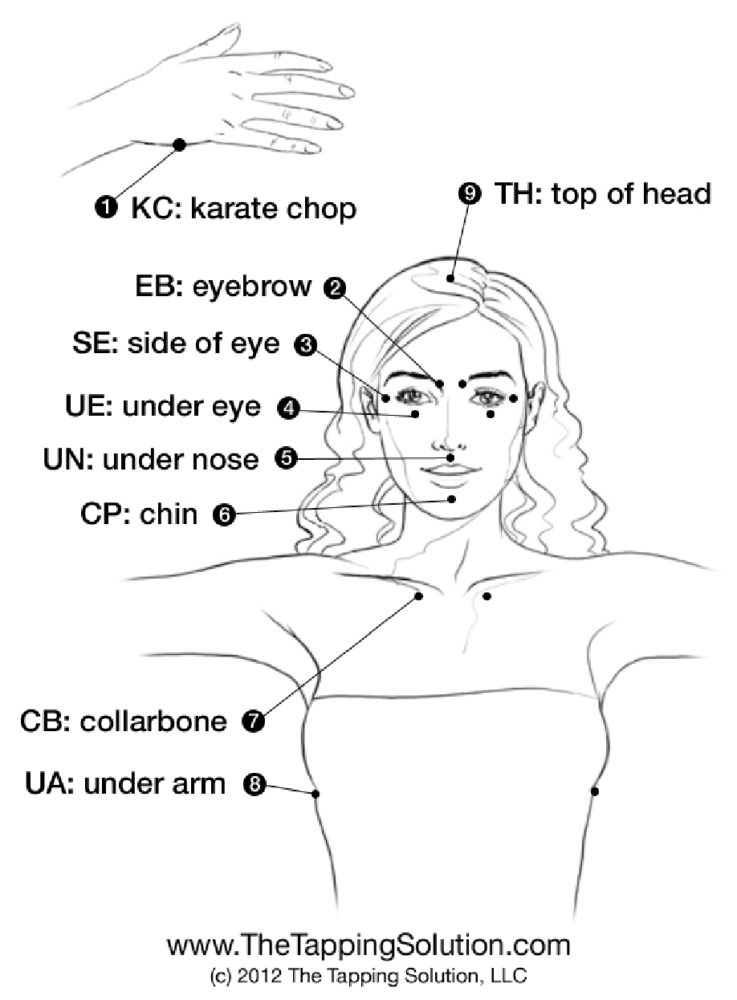
One of the greatest ways to begin healing stress is through a powerful process called Emotional Freedom Technique (EFT). It’s also known as tapping.
EFT combines the cognitive benefits of therapy with the physical benefits of acupuncture to restore your energy and heal your emotions. EFT doesn’t use needles. You just stimulate certain meridian points on the upper body (seen in the diagram) by tapping on them with your fingertips.
Find out more about EFT along with guided videos here.
meditate to reduce stress
Practicing the EFT video above will help you get to the root cause of your stress and anxiety. Once you’ve applied the EFT practice, you’ll feel great relief. I recommend practicing it regularly. The more you do it, the more familiar you’ll get with the process and the more you can weave it into your everyday life.
Another spiritual method for releasing stress and anxiety is to have a daily meditation practice.
I have a few more stress-busting tips for you. They’re part of what I call The Digestion Diet, which I’ve outlined below!
the digestion diet: a practical and spiritual plan for long-term gut health
I don’t believe there’s one diet for everyone. Some people do really well on a diet with lots of variety, some thrive on a plant-based diet, some people rock the raw, and others go big with meat. I don’t care which diet you choose. All I care about is that you properly digest your food. Hence the concept I’ve coined: The Digestion Diet!
The Digestion Diet isn’t just about food. There are several important components to digesting well…
get to know your own body
I believe that the best way to heal gut inflammation is to reduce stress and digest! Healthy digestion is key to our overall well-being. Throughout my gut-healing journey I’ve become super clear about which foods aggravate my gut and which don’t. Some foods that you’d think would be awesome for me are actually really hard for me to digest.
For instance, raw food and I are not friends. No bueno! I have come to accept that my vegetables have to be cooked, and cooked well. I’ve also learned that I can eat dairy, but softer dairy like goat or sheep’s milk is a lot easier for me. I now know that I can’t eat fruit after a meal because the fruit digests faster than the other food and therefore ferments on top of my earlier meal. This may not be an issue for folks with a stronger stomach but for me, again, NO BUENO!
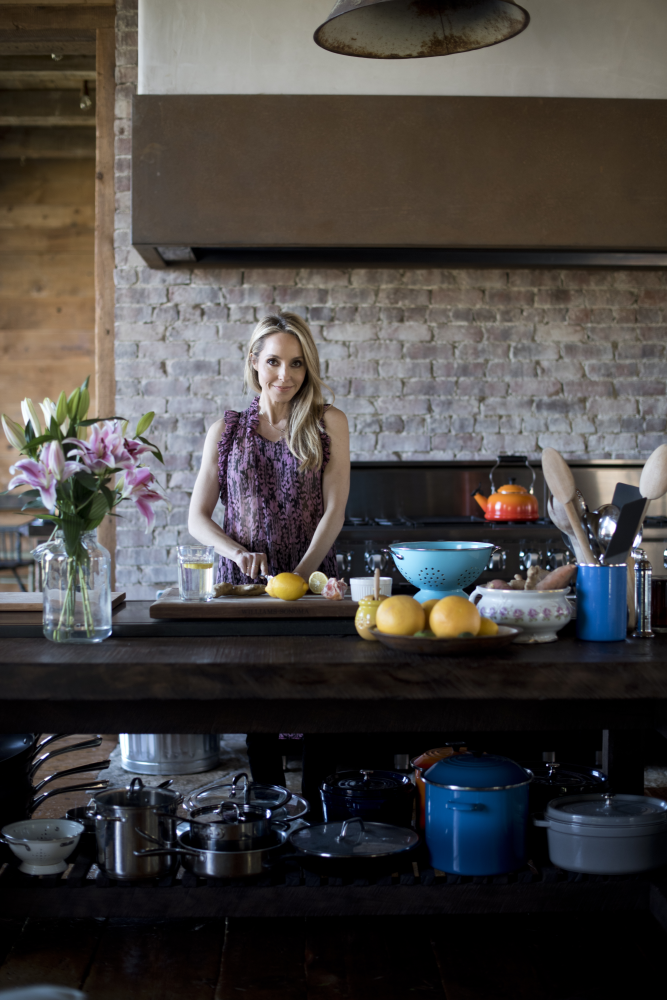
Learning what my body likes and doesn’t like has saved me. I can now consciously eat food that makes me feel good. My food choices may seem strange to others, but they work for me. And that is what’s so important. It’s all about what works for you. I’m sharing what worked for me to give you an idea of what it means to get to know your own body!
ask your doctor about food combining
When focusing on the digestion diet I am very conscious of food combining. The concept behind food combining is that certain kinds of foods pair well together for optimal digestion (such as grains and low-starch vegetables), while others don’t (grains and protein).
Some folks, like my husband, have a stomach of steel and can eat fruit after meals and mix grains with protein. If you have any GI issues I recommend talking with your GI doctor about what is healthiest for you and whether there are certain food combinations you should avoid. Put your digestion first.
pray before meals
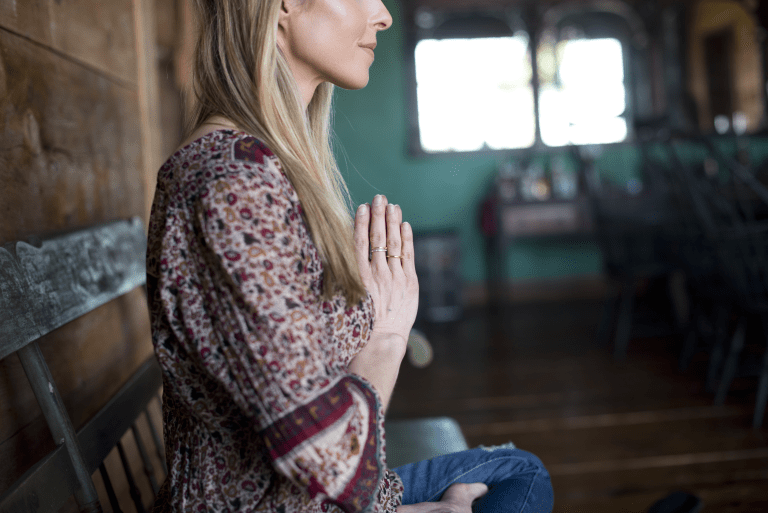
Another key ingredient in the Digestion Diet is prayer. I pray before each meal to center myself and connect to my food. Affirm how you want to feel through prayer. You can say a prayer like, “May this food nourish me and heal me. May I enjoy every bite, eat mindfully and digest well.” Pray for how you want to feel. Prayer will encourage your digestion by calming you down.
be a mindful eater
When it comes to digestion, the less stress you put on your GI tract the better. Become a mindful eater by thoroughly chewing your food (30 chews per bite of food) while repeating a positive mantra. A beautiful mantra I once learned is, “I love my food, my food loves me.” The more slowly you eat, the less likely you’ll be to overeat and stress your digestive system. By eating mindfully I still get plenty of calories and enjoy my meals. But I’m not abusing my digestive tract by making it work too hard.
don’t go to bed shortly after dinner
Another digestion no-no is lying flat after consuming a meal. Your digestive tract needs your support. Sitting up straight helps the food sweep through and promotes healthy digestion. When you lie down after a meal (which I know can be tempting), you can often experience acid reflux or regurgitate your food. Your esophageal sphincter holds the food and acid down. When you lie flat, it relaxes and food can come up. It’s important to treat your esophageal sphincter well. Reducing stress helps, because when you’re stressed the sphincter relaxes and then flaps up, which causes acid and food to go up your esophagus rather than stay in your stomach for proper digestion.

To support your digestion, do your best not to take a nap or go to sleep for at least three hours after you eat. You need three hours to fully digest your meal. If you struggle with reflux or heartburn (especially those pregnant mamas in their third trimester!), it’s super important to eat dinner early and fully digest before you go to bed. You’ll sleep much better, dream better and wake up feeling rested.
intermittent fasting
Another Digestion Diet suggestion is intermittent fasting (IF). This is not for everyone, and there are times in my life when intermittent fasting simply doesn’t work for my body. (I didn’t do it when I was pregnant, for instance!) But, some people find that they derive great benefits from IF.
what is intermittent fasting?
Intermittent fasting is a diet where you switch between periods of eating and fasting. It’s not so much about what to eat as it is about when to eat. There are different ways people practice intermittent fasting. Some people fast for 24 hours one or two days a week. Others take long breaks between dinner one day and breakfast the next.
I love to fast for at least 14 hours in between dinner and breakfast. I will eat my last meal no later than 6 pm and then not eat breakfast until 8 am. The later you eat dinner, the later you eat breakfast. If I wake up early I’ll have a big glass of water before it’s time to eat breakfast.
Intermittent fasting can be fantastic for your digestion because it gives your GI tract a break. However, be sure to talk to your doctor before you start any diet, especially if you have any other health conditions or take other medications. If you try intermittent fasting, it’s important to do it in an informed way so you know you’re getting proper nutrition.
detox in an infrared sauna
One more great way that I reduced my stress and inflammation during my SIBO healing was by regularly getting into an infrared sauna. My infrared sauna was my favorite place to meditate while I detoxed and healed inflammation (note: don’t use it if you’re pregnant). For more on infrared sauna healing, click here.
heal with meditation
Meditation is a powerful tool for healing our physical body. From a spiritual perspective, our thoughts and feelings create our reality. If we are constantly thinking things like, “I’m so sick,” “I’ll never feel better,” or “I have a lot of digestion problems,” we will continue to experience illness.
Therefore, I believe it’s very important that we change our thoughts. When we change our thoughts, we redirect our energy onto healing! As soon as we do this, the Universe gets to work supporting our energetic request.
get groovy in the kitchen!
Once I started committing to the digestion diet I knew that I had to get creative. If I was going to eat food with the exact ingredients that made me feel good I’d have to prepare a lot of it on my own. This began what I call the Gabby Cooking Show on Instagram!
I started to have a lot of fun in the kitchen and I challenged myself to health-ify recipes that I once used to love. For instance, I’d make gluten-free chicken cutlets, sugar-free and gluten-free banana bread, and countless other recipes that contributed to my gut health. Here are some of my favorite gut-healing recipes that will nourish you and are fun to cook!
tahini fudge
When I was healing SIBO I got this recipe from Dr. C’s nutritionist, Catherine Marcellino. This tahini fudge rocked my world. I’d eat it by the spoonful!!!
Ingredients
- 2 Tbsp. ghee or organic palm oil shortening
- 2 Tbsp. coconut oil
- 1 tsp. cinnamon
- Liquid stevia (I use vanilla flavored)
- Salt
- ¼ to ⅓ cup tahini
Directions
1. In a small glass container (I like the square or rectangle shapes, with a wide, flat surface area), melt shortening/ghee and coconut oil, just until soft.
2. Stir in liquid stevia (equivalent of 3 packets of stevia) and cinnamon.
3. Stir in tahini. Mix well with spoon.
4. Place in the freezer to set, and then score with a knife and eat! Yum!
gluten-free & sugar-free banana bread
I love making banana bread! Writing down a recipe is really hard for me because typically I don’t use them. But here goes…
Ingredients
- 2 bananas
- 2 eggs (or flax eggs if you’re vegan)
- 2 cups of chestnut flour (or almond/coconut flour)
- 1 tsp. baking soda
- 1 tsp. vanilla
- ½ cup coconut cream (add more if you want it fluffier)
- 2 Tbsp. coconut oil, melted
- Walnuts
Directions
1. Mix all the wet ingredients into one bowl and blend.
2. Mix the dry ingredients into another bowl.
3. Combine the two mixtures and blend with a handheld blender or a spoon.
4. Grease a loaf dish with coconut oil or butter, then pour the mixture into the dish.
5. Bake at 350° F 40-60 minutes. It’s done when a fork stuck into the loaf comes out smoothly.
whole roasted chicken by robyn youkilis
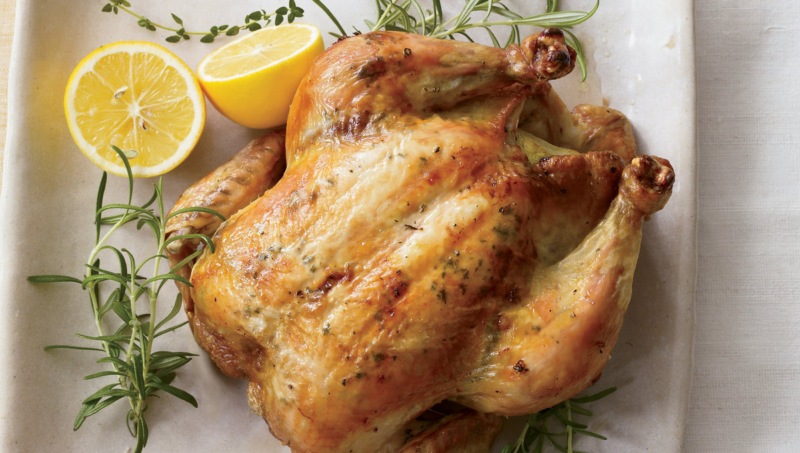
Ingredients
- 1 (4- to 5-pound) whole chicken, neck and giblets removed from the cavity
- 2-3 Tbsp. olive oil, ghee or grass-fed butter
- Sea salt
- Freshly ground black pepper
- 1 medium lemon, thinly sliced (optional)
- Fresh herbs, such as parsley, rosemary or thyme (optional)
Directions
1. Heat the oven to 425° F and arrange a rack in the middle.
2. Place the chicken on a work surface or cutting board and pat it dry with paper towels.
3. Drizzle the oil on the chicken and rub it all over the skin. Season generously inside and out with salt and pepper. Place the lemon and herbs inside the cavity, if using. Place the chicken
breast-side up in a large frying pan or cast-iron skillet.
4. Roast the chicken in the oven for 15 minutes. Reduce the temperature to 375°F and continue
roasting until the juices run clear and a thermometer inserted into the inner thigh (but not touching the bone) registers 165° F, about 50 minutes to 1 hour more.
5. Remove the chicken from the oven and place on a cutting board. Let it rest about 15 to 20 minutes before carving.
good gut gummies by robyn youkilis
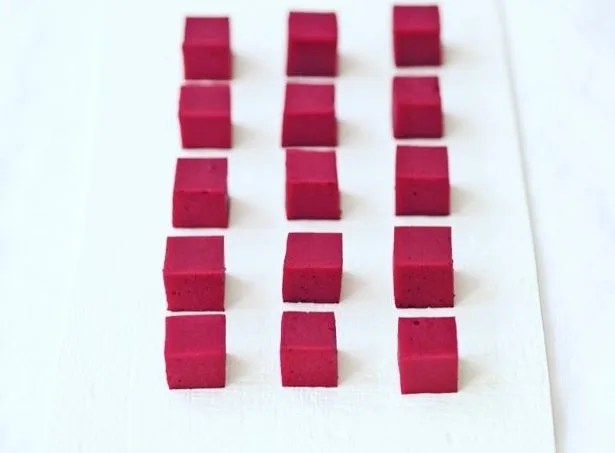
This recipe is from Robyn’s book Go with Your Gut
Ingredients
- 1 cup frozen blueberries or raspberries (or a mix of the two)
- ¾ cup fresh lemon or lime juice (or a mix of the two)
- 2 to 3 tsp. honey (generally 2 for adults, 3 for kids)
- ¼ cup unflavored Great Lakes Gelatin
Directions
1. Add the berries to a small saucepan over medium heat.
2. Stir the berries and allow them to cook until the liquid is steaming and the berries are plump, about 6-10 minutes.
3. Place the lemon juice, honey, and berries into a high-speed blender or food processor, and blend
until smooth. Remove the lid and allow the mixture to cool slightly.
4. Add the gelatin to the blender and blend again until smooth.
5. Pour the mixture into candy molds, or a 9 x 9-inch baking dish, and refrigerate for 30 minutes to 1 hour.
6. Once the gummies have set, remove them from the molds or slice them into desired shapes and store in the refrigerator.
To get videos with more of my recipes, check out the Gabby Cooking Show on my Instagram story!
passionate about gut health and want to help others?
When you heal yourself, you may feel called to help others heal as well! There are so many amazing opportunities available to qualified health coaches… and there is a huge need for them.
Do you get really nerdy about the latest superfood trend or the easiest way to get more greens into your diet? And would you love to make your passion for wellness your career?

Check out my article on the Institute for Integrative Nutrition for the lowdown on how to get started as a health coach and use your passion for wellness to help others!
finding gratitude for my struggles
It took me a long time to feel strong enough to write this article. I believe deeply in the Law of Attraction. Therefore, I wanted to make sure I was in a very healthy, positive place before I shared about my gut healing journey. Today I can look back on the physical struggles I had and feel grateful.
I’m grateful that my body guided me to slow down enough to heal my past, end my addiction to stress and even help me conceive. Today I enjoy my meals and appreciate my ability to digest with ease. I am grateful for this healing every day.
If you’re still struggling with a gut issue, please know there is light on the other side. When you make your digestion and gut health a priority, you will change your life forever. You’ll heal physically, mentally and spiritually. Happiness and well-being are always flowing. It’s your time now to get back into alignment with that flow. Let this healing journey be fun and empowering.
I truly hope this article has served you.
May you be happy, may you be healthy and may you digest with ease.
Note: This post contains affiliate links. I may earn a fee for purchases made through these links.
get more guidance
I can be your coach—anytime, anywhere!
My NEW gabby coaching app makes personal growth easy to access. Get weekly lessons, guided meditations and proven manifesting methods to enhance every area of your life—all inside the exclusive member’s app.
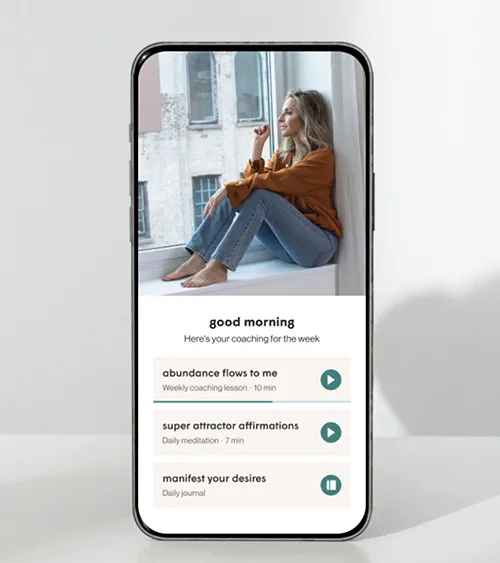
Transform your life in just 10 minutes a day with:
- Weekly coaching with practical tools that will instantly improve your life
- Quick access to 200+ meditations, affirmations, prompts, lessons and more
- ️️Quarterly challenges to release old patterns and jumpstart new habits
- On-demand access to my best motivational talks
I’ll be your coach to help you manifest your desires and live with an unshakeable sense of inner peace.



